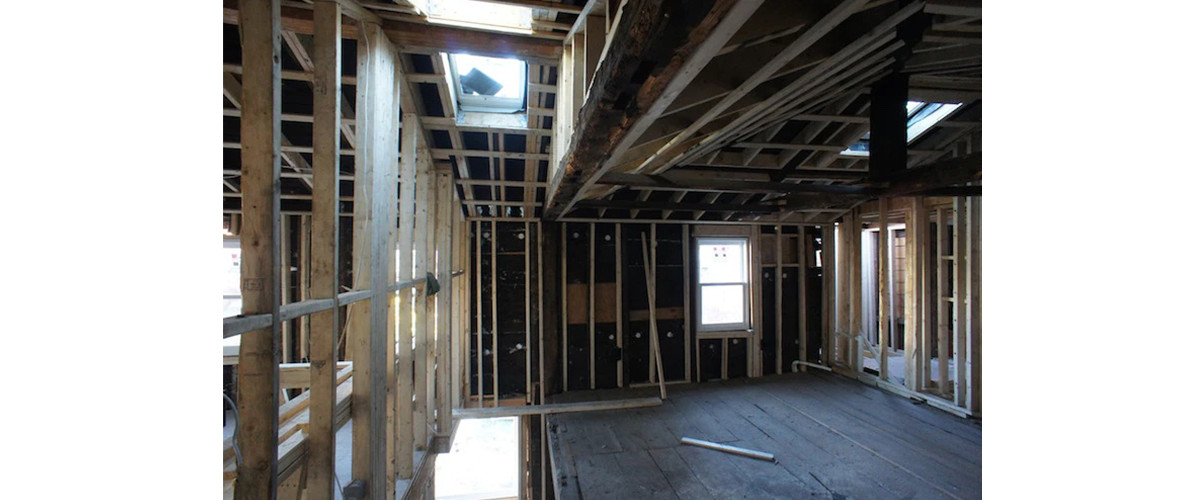Here's a sweet example of a successful Deep Energy Retrofit (DER) with airtight, foam-free walls and high performance ductless ventilation. The designer and GC is Jeff Geisinger, a Boston-based architect who recently completed a SMArchS in Building Technology at MIT.
Peruse the stunning before-and-after photos along with Jeff's great diagrams here (click on large photo for full-screen slide show).
Update: Lloyd Alter @ Treehugger did a nice reblog of this post with excellent commentary - definitely worth a read!
Airtightness Before Insulation

Architects, take note!
With a recently re-clad exterior and no way to expand outward, this project had to make the most out of limited interior space. The clients were understandably unwilling to give up much at the walls. Jeff compromised by furring the wall inward by about an inch with a new staggered line of studs that provided a thermal break (see drawing at right). This also had the nice added benefit of squaring the wall.
Once again, INTELLO PLUS played the starring role as airtight layer (with TESCON VANA tape and CONTEGA HF caulk), smart vapor retarder and netting for dense-pack cellulose. No other interior membrane gives you this 3-in-1 functionality to reap all the benefits of foam-free construction. INTELLO ensures that these century-old walls will be able to dry inward - and stay durable and healthy - for the next hundred years.
We like to say "airtightness trumps insulation". This project perfectly illustrates that truism. Even without the thermal break, the airtight INTELLO potentially added about R-4 to the wall assembly by optimizing the insulation performance. Airtightness provides greater comfort, resilience and cost savings - essentially for free.
The Green Cocoon installed the INTELLO PLUS system and dense-pack cellulose insulation behind it.
Ductless Ventilation with Lunos e2 HRV

Big energy savings from airtightness and heat recovery ventilation!
We also like to say that ventilation has an energy problem - and most of it just sucks. (We're not the only ones saying this - also see BSC-012: Balancing Act - Exhaust-Only Ventilation Does Not Work.)
Adding ducted and balanced ventilation to a retrofit is a pain. That pain - and the cost associated with it - multiplies for small projects with limited chases and crowded interior and exterior walls.
Through-wall, ductless Lunos e2 systems ease the pain. This project went with two short (6") e2 pairs (2 pairs = 4 fans) on one controller, so the system all but disappears in the walls. Fresh air is evenly distributed across all interior living spaces, with fans placed in bedrooms and living room, and undercut doors to ensure adequate transfer. Exhaust-only spot ventilation on a timer was added to the bathroom. Lunos HRVs are easy to install and maintain, energy efficient, quiet, reliable, simple and comfortable.
Impressively, energy modeling (above) showed that airtightness and heat recovery ventilation saved more energy than new windows and insulation, compared to existing conditions. When all improvements are added together, this project will use about half the carbon that it did before.
Before and After

This project shows just how important it is that we do the most sustainable thing: save and retrofit old houses. We love how Jeff cleverly opened up the floors to create a spacious, flowing and dramatic interior, while still retaining the character of the original. His diagrams (one example at right) show how much thought he put into creating a holistic user experience.
Here are a few before and after shots that show just how awesome this project is. Enjoy!









